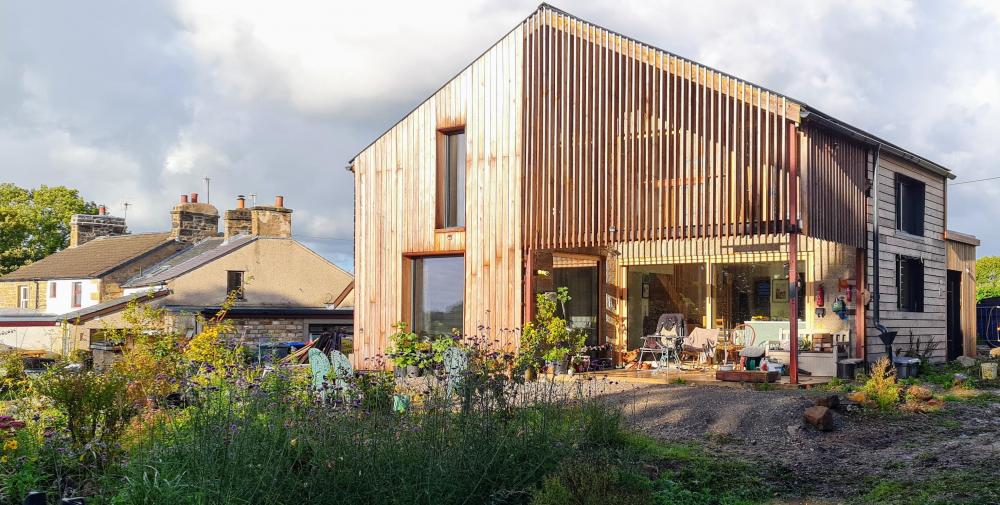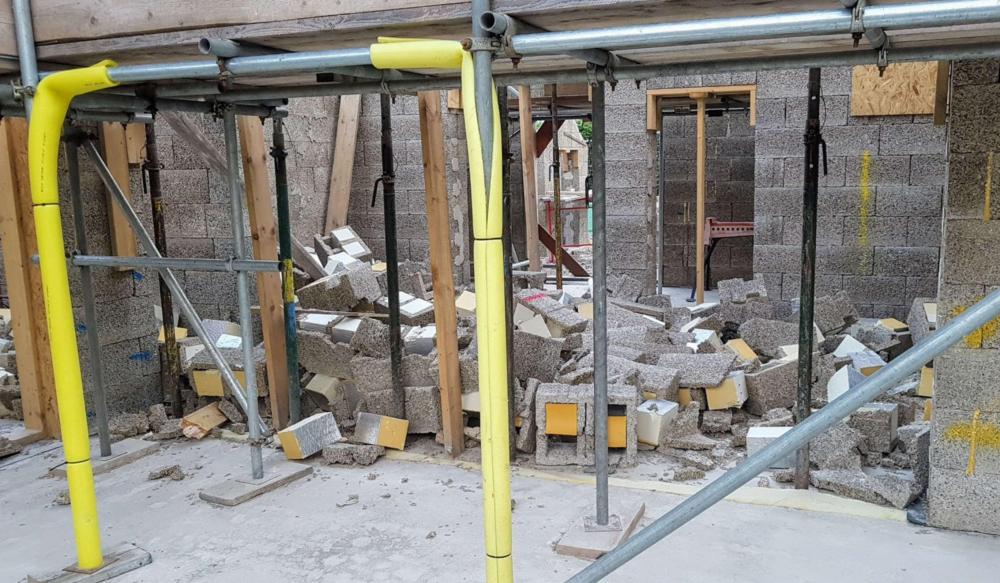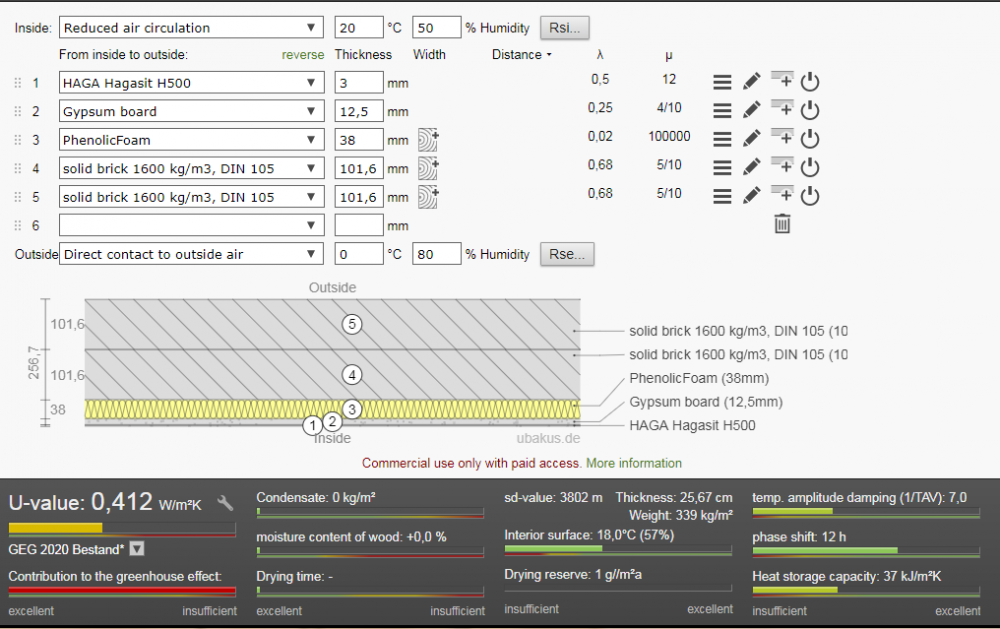Leaderboard
Popular Content
Showing content with the highest reputation on 09/28/21 in all areas
-
Just clearing the site today and it occured to me as I filled the skip (last one?) I know what I paid for every bit of 'rubbish' I threw away ? The early evening sunset on the cladding knowing everything about a house knowing I can pull myself up from major disasters being grateful for all the friendship of the vast majority of (chatty) passers-by. the banter on BH knowing what some locals really think of the house, as opposed to what they say in public fora all the well-meaning advice from everyone who offered it the silence from those passers-by manage to read my non-verbal cues @SteamyTea, @PeterW, @Stones, @ProDave, @Dudda, @jack, @Moonshine, @scottishjohn, @pocster, @Onoff , @Jeremy Harris, @Construction Channel, @the_r_sole, @Crofter, @Ferdinand, @MikeSharp01, @newhome , @Declan52, the Mods, The Foundation Group (I've missed some I'm sure) , all people who have bothered to give me their time and thought my mates who come round and (mostly) help. If you buy a digger, they just want the keys. the ability to keep going under pressure: if I didn't have that pressure, I'd become a fat(ter) slob the knowledge that I'm probably over-priviledged: at least very very lucky. Retiring the day we got PP and done nowt else but this for the last 5 / 6 years. I've lost count of the passers by who stop and talk wistfully about their dream of being able to do what I have That gorgeous lass who jogs past the site in top to toe super-tight lycra, smiles widely, says Hi. She melts my withers every damn time. That do ya?4 points
-
A good idea as a better bodge. Or take out a block or half block and replace with gravel. If the builder will come back, just ask him to reset it.2 points
-
I considered it but decided you didn't need it. It's unlikely your VCL will be perfect in any case. Certainly not if you plan to fix plasterboard directly up underneath it as guys can play fast and loose with the screw gun. You're unlikely to have many penetrations in the plasterboard also. I'd save myself the hassle, sealant and paint will be fine.1 point
-
Easy peasy then. take out 3 edge blocks. scoop some sand out to be 10mm lower, smoothing up to zero to make a dish, or not as you choose, then relay.1 point
-
Thank you so much for your suggestion. We will try that as the edge blocks are on sand. I managed to replace a broken brick in the middle of the patio quite easily myself with a screwdriver and a chisel to prise it up and we relaid the shed base (on the left side with the large pavers) as the level was way off so I think we can probably do this ourselves Will send pictures if we manage to resolve it1 point
-
Forget the MVHR in the garage. A complete waste of ducting and the system. I had an insulated roof put on an unheated garage a couple of years ago and it stopped all condensation. They came in large plastisol sandwich sheets with 40mm pir. Single garage was £1600 plus VAT all in including removal and disposal of the old asbestos. Mine came from these people http://www.icroofing.co.uk/ There must be someone similar down your way.1 point
-
I remember this exact same problem with the flags to the entrance of one of our buildings- got the builder back and he said “sure just drill a few holes in it” - terrible idea and not what we paid for. Got him to relay the flags. Seriously - the patio should have been laid to a fall to grass or some other porous surface. As other posters have said ask him to come back and lift the affected area.1 point
-
lifting and relaying the blocks to that puddle area is the work of 2 hours, and only some more sharp sand needed. They can shape it to tip under the fence or outwards, but check it doesn't just make another puddle. A drain into the soil will not necessarily work and may wash away the ground beneath. A proper drain will also have to go to an outfall somewhere. Hence I prefer to use gravity and flow. TIP use a golf ball or other hard, smooth ball (snooker, lacrosse) and roll it gently all directions. your watering can method is good too of course. As a bodge you could rake out the sand at the deepest point, and up to the fence, and the water might go away. Then the blocks will move and perhaps settle over time. Or get hold of the kind of blocks which don't use sand fill, and are designed to drain.1 point
-
Water will find the lowest part and gather here. Was the new patio meant to fall this way or do you have a drain elsewhere that the majority of the water runs to. A drain is easy to install but obviously a run of the paving bricks needs to be lifted to get from where these puddles are to the actual drain. What is on the other side of that fence??1 point
-
The blocks should have been laid with a drainage slope, and the puddle implies they were not bedded down well and have now sunk. drilling a hole and filling with gravel would probably work but you have had this done professionally and it should be right.1 point
-
Over to the neighbours via the fence.......I expect that a lot of it already is. Am i right in saying that under 15square mt's, SUDS don't come into play ? However over 15square mt'S has to either drain onto your own land, or be suds compliant ?1 point
-
1 point
-
1 point
-
My 12kW Nibe requires a minimum 80l buffer (or always open loop), and I believe the 8kW Nibe was the same. I've gone with a 200l buffer, but for cooling reasons. ie. I can cool the buffer and let the UFH work off of that for longer while the ASHP is heating the UVC.1 point
-
The German site talks about " Wir bauen Gesundheit" We build health (as in wellness) My (German) reaction to that is hmmmm .... Some German bread has been rebranded as (in translation) Protein Bread. Rye breads and the like ... same stuff as it always was - its just that normal bread isn't the mood of the moment In short Eco in this context appears to me to be a reaction to the mood of the moment. Eco is where its at. Huff and Ecofritz and others from Germany have always built to higher than UK insulation standards - because it's 'kin cold there in winter. Triple glazing is the norm....1 point
-
I think the PIR is a really good solution. You could fix strips of 25 x 38mm batten to the sides of the rafters to maintain your airflow gap. You could use further short pieces under to hold the PIR firmly in place. 40mm PIR is easy to cut but quite rigid.1 point
-
i get the idea, likely solar power at 4kw is ok idea but anything above is going to need more permissions and a battery is 100% no go! i think im going to go with a 4kw system 8 if i can get permission and leave the battery to another time when there more efficient or better priced etc.1 point
-
Ah yes. Fair comment. I have been lamentably lax with my blog posts. Should get back to them. Foundations are done. Timber frame is up, roof is going on. Windows are on site and I am just about to install them. Roof windows too. Hope I will be superficially weathertight (without external cladding) within a a month.1 point
-
Your M&E guys must be assuming the energy losses of the FF (and basement) are then being covered by another heat source. I can't imagine you want to use the electric UFH and towel rads to fully heat the FF, but rather to top up those rooms if the GF heat has not permeated sufficiently. Your ASHP needs to cover the total energy losses for the house and the GF UFH needs to emit sufficient heat for the whole house. This will then permeate to the 1st floor via convection, conduction and MVHR. In a well insulated and airtight house, DHW is more likely to be the energy requirement that drives ASHP sizing. What size UVC have you spec'd? I have a slightly lower energy loss than your calculation, and a 500l UVC. I went with an over-sized 12kW ASHP for a quick reheat time on the cylinder. I could probably have gone with 8kW ASHP and not noticed the difference as the DHW usage is not as big an issue as I expected, even when both space heating and hot water are being called for simultaneously. Over-sizing the ASHP does of course require a decent size buffer for space heating.1 point
-
You can Jet wash the whole area Which will clear the joints out and wait for a sunny dry day Then sweep the kiln dried sand in1 point
-
A unit of energy is the joule [J]. A watt [W] is a joule per second [J/s or Js-1]. The joule is often changed into the more confusing unit the Wh, or kWh. There are 3,600,000 J in a kWh. This is because k [kilo] is 1000 and there are 3600 s [seconds] in an hour. Just to make it really hard, the joule is a derived SI unit, so is made up from the base units of the kilogram, the metre and time. kg.m2.s-2. This allows it to me used for all forms of energy. J = kg.m2/s2 = N.m = Ps.m3 = W.s = C.V = Ω.A2.s To put it into simpler terms, if a 2 kg mass is moving at 1 m/s, the kinetic energy is 1 J. So about 4.4 lb moving at 2.2 MPH (you can see why we use SI units). 1 J = 0.0009478171 BTU (how horrible is that) To convert joule to Wh, multiply by 0.0002777778 which is just 1/3600 Just for a laugh, and I cannot be bothered to get up out the chair this morning, the letters used in SI units are important. J is used for joule, which is named after the man Joule, only use Joule when referring to the man, or at the beginning of a sentence, the same is true for W, watt, named after Watt, though it should really be named after Trevithick, but we use T for temperature, t for time, which is usually s for seconds. 3600 seconds is an hour, h and k is 1000, K is kelvin, named after Kelvin, and is a temperature scale, with 0 K being the point where motion stops. So if you see KWH that is actually a temperature times a watt times an inductance KelvinWattHenry. Which I think is a totally nonsense unit.1 point
-
dig down at back and find the pipe this will determine your lowest point. Connect to it using a small chamber so you can clean silt etc from it.1 point
-
The immediate issue I see is you need to install a French drain alongside the wall of the house to drain it, BUT the land you need to install the drain on is not yours, it is the public pavement. you can't just go digging up the pavement and installing this drain without getting permission, and then the work will probably have to be done by an approved streetworks contractor after paying the council for a road opening permit.1 point
-
Apologies, in the very last calc., I've incorrectly used the the Thermaline's U Value and not its R Value. So, what I should have said is: And then to get the total U Value of the new wall build up: 1 / ( R of original wall + R of the Thermaline), so 1/ (0.51 + 1.96) = 0.405W/m².K Edited to add: ...and Ubakus roughly agrees1 point
-
For what it is, you're never going to have an exceptionally well insulated garage. The garage door will not be anything near airtight so it'll never be warm. I assume you have no floor insulation? I see your main aim as keeping condensation at bay and providing some level of frost protection. For the roof make sure you build something that won't rot. Warm roofs are generally safer in this regard but cold ones can work too provided you don't trap moisture in the structure. In your case I would build: Roof final covering Ply Roof furring strips for slope 50mm min gap between joists above the insulation. Every single cavity well ventilated to the outside via the eves Ideally at opposite sides of the building. Include some insect mesh here to keep the creepys out. 150mm earthwool push fitted between the joists . It's very cheap and more is no harm as you'll loose some of the insulative value due to thermal bypass. You can use netting or waste plastic strapping stapled to hold it in place. Plasterboard taped and skimmed at the joints. Use a flexible sealant to join it to the wall and seal the few penetrations in the plasterboard well. This will be enough to prevent bulk air movement taking moisture into your rafters. I would fit through the wall ventilation in the wall opposite the garage door to ensure the humidity didn't rise to unacceptable levels inside. Put them somewhere they won't get obstructed. As for the MVHR. Best practice is to have it within the thermal envelope of the house. If this is not an option I would build an insulated box for it to at least the same standard as the house. Make it accessible for servicing. Don't forget about the condensate drain and consider that this will freeze if not protected. For the walls, I would lean toward S&C. More airtight, firmer to fix into, probably just as cheap as you're rendering externally anyway. If you use plasterboard I would omit the vapour barrier. It will cause more problems than solve them. It'll be full of holes anyway as you'll have to mechanically fix through it.1 point
-
You can use all different colours of sand plus white cement to give you a different coloured finish.1 point
-
Air leakage, thermal bypass, cold draughts, living in plasterboard tent, draughts everywhere, for starters1 point
-
I used a manual mortar gun and that was great if your mix was right but terrible if wrong and would hydraulic in tube, an electric one would burn out pretty quick if you get mix wrong.1 point
-
RX101 , i don't use any other and its what most designers spec as standard on large RC frame projects where required.1 point
-
There is a bit of a mix up in the units. Typical units for U Value are W/m².K . the 1.9 figure you have looks "about right" for a 9" solid wall with some plasterboard on it, so that's probably 1.9W/m².K The value you have for the Gyproc Thermaline Super looks more like a λ (lambda) value ie. Thermal Conductivity of the phenolic foam part of the composite board. The typical units for an λ value are W/m.K. But the boards are made up of gyproc wall board (λ 0.19W/mK) + the phenolic foam (λ 0.020W/mK). If you wanted to workout the thermal resistance (R value) of the whole board thickness, you need to divide each material's thickness in meters, by its λ value to get its R value, and add the R values together. Typical units for R are m².K/W For the 50mm thick Gyproc Thermaline then, that's (0.012 / 0.19) + (0.038 / 0.020 ) = 1.96 m².K/W (I've assumed 12mm gyproc and therefore 38mm phenolic foam) To get to the U value, you need to 1 / (sum of the R values). For the Thermaline on it's own that means the U vlaue is 1/1.96 = 0.51 W/m².K But to see how this effects your wall if added on, then you need to revert the wall's U value to it's R value ie. 1/1.9 = 0.53 W/m².K And then to get the total U Value of the new wall build up: 1 / ( R of original wall + R of the Thermaline), so 1/ (0.51 + 0.53) = 0.96W/m².K Edited to add: There are online calculators to make this easier https://www.ubakus.com/1 point
-
Prices from £2300 to £5300 depending on size. That's probably a 25 year payback. Something that would need a bit of thought before committing to. https://www.phstore.co.uk/awadukt-thermo1 point
-
They are two different parameters. The second is the thermal conductivity of a single material and is independent of material thickness. A two brick solid wall has a U-value of approximately 2.03. This means it has a thermal resistance of 1/2.03 or 0.49m2K/W Where you have a thermal conductivity the thermal resistance of a layer is thickness in metres/thermal conductivity. You can then add all the thermal resistances together and take the reciprocal to get the new U-value. 75mm of your insulation will be needed to get below the requirement for renovations to achieve not more than U=0.3 (Part L1B) It will give U=0.234.1 point
-
Oh if you're using slabs then you're better off setting into cement:sharp sand bedding throughout. https://www.pavingexpert.com/pccflag11 point
-
It is fake news that 3g can be bettered by any 2g and nonsense Our uk plastic windows are poor quality and short lived, proper windows should last many decades1 point
-
3g is the mainstream product in central and Northern Europe with good reason. extra sheet of glass in a more robust frame makes perfect sense1 point
-
We have our own bit of woodland and will likely mostly be burning fallen timber that would rot in a less environmentally friendly fashion otherwise.1 point
-
Haven’t you installed a wood burning stove that negates all that “green tech” anyway so is this clearing your conscious of that by installing something to offset that ..??1 point
-
In case anyone out there is interested - we managed to reclaim our PD rights successfully. A real result. Much teeth-gnashing among the neighbours but hey, the rules are the rules, right? We found the council lob this remove PD rights clause almost as a default setting, which is extraordinary. There's a total pattern to it. It's like preying on the naivety of home owners. Anyway, this is the man we have to think for a formidable application > http://just-planning.co.uk/1 point
-
We thought so, a bit different. We never thought we could afford an Internorm door let alone one with a fingerprint sensor.1 point
-
So Debbie doesn't track and monitor your threads then. ?? In the Jan's case, it's more case of involvement / genuine interest in the content than any Stalinist control, but I still need to remember that anything that I say might be read and picked up1 point
-
They look good on films, etc., but I suspect that making one in real life will be troublesome. A lot of firedoor-rated sliding door gears will be heavy duty enough to carry a light book case, but if you want it to carry non-trivial capacity then you will need a bottom rail as well or some form of casters if you are rolling over a hard surface such as tiles. There are also lots of fun details such as the wall to the side of the case will have skirting and the door will need to clear this, plus you will have a top rail to the side that you will need to hide somehow if you want the door to be "hidden". The sliding case will not only need to slide, carry its load but also have extra racking stiffness to say structurally sound during opening and closing. So entirely doable IMO, but the devil is going to be in the detail and it is going to involve a lot of work. There is also the safety issue as well -- you need to be sure than said door can't come off the mount and flatten said person in the wheelchair. This is one where if you don't want to say "no" to your nearest and dearest, then you "future facilitate" the project by having an simple opening and leaving the wall to one side clean with the suggestion that "we do the door itself a year after we've completed the house, moved in and done the million and one other jobs that really need doing".1 point
-
You can be very cunning with the 28 day rule, too, as long as you have a group of at least thirteen, preferably 14, people. A small group of flying friends have provided themselves with an airfield, without needing planning permission, by using the 28 day rule. They clubbed together and bought a field, then divided it up into strips, and each member holds the title to one of the strips. They erected a couple of poly tunnel hangars, that are classed as temporary agricultural buildings, to keep their aircraft in. They keep a separate usage log book for each of their airstrips, to make sure that none of them is ever used for more than 28 days in any 12 month rolling period. The strips are used in sequence across the field, with the unused strips being used for rented out grazing (they just move an electric fence). You could, I'm sure, do the same with mobile homes, just move them from one pitch to another every 28 days. The key is to ensure that each pitch is in separate ownership - this trick does not work if one person owns the lot.1 point
-
0 points
-
Good luck @Adsibob, this sounds tricky. I always find that if you ask two plumbers the same question, you will get three different answers!0 points
-
0 points
-
0 points














